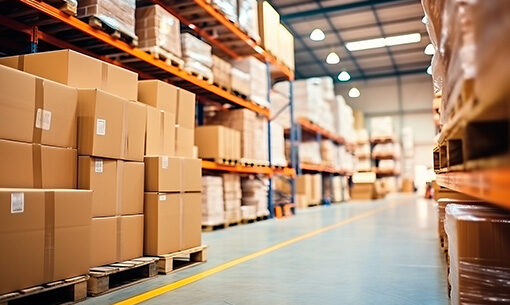Peak’s approach to demand forecasting
By Tom Hassall and Simon Spavound on September 4, 2023Demand forecasting — being able to predict future demand for a product or service — is often the most important input when it comes to making business decisions.
The ability to accurately forecast demand has always been a challenge, but in recent years it has become even harder. Uncertainty and volatility remain rife in the supply chain, and ever-changing customer behaviors, expectations and trends continue to cause headaches for demand and supply teams.
Thankfully, artificial intelligence (AI) is here to help.
In recent years, AI has revolutionized demand forecasting by offering more sophisticated and data-driven methods. AI can analyze vast amounts of historical data, identify hidden patterns and adapt to changing trends, resulting in more accurate forecasts.
The computing power to do this type of analysis has become more widely available, and at a much lower cost than ever before, and the ability to scale and deploy more complicated models has had a massive impact on forecasting.
Applying AI-driven forecasting to supply chain management can reduce errors by between 20 and 50%.
McKinsey
AI-driven operations forecasting in data-light environments, 2022
However, while AI brings tremendous power to demand forecasting, it still isn’t enough to achieve the high levels of forecast accuracy we need and to support the myriad of business decisions that we can make off the back of a forecast.
Here at Peak we take a unique approach that can help businesses turn their forecasts into action — and drive real, tangible results. Let’s take a quick look at some of the key characteristics of demand forecasting at Peak 👇
Peak: a forecast to rely on
As we deploy our AI-powered Dynamic Inventory application, our team will explore a range of tactics, such as…
Understanding business decisions
Peak’s unique approach starts with a detailed analysis of the business we are working with and a detailed understanding of what decisions the forecast will drive. Many forecasting products will promise to increase forecast accuracy, but at Peak we know that forecasts are only useful if they are tied to a decision.
That’s why we invest time in really understanding business processes and the unique operating model of your business. Once our team has scoped the decisions that need to be optimized and the guardrails for those decisions, we set out to create the perfect machine learning-powered forecast.
Leveraging data from multiple demand drivers
Incorporating data from various demand drivers is essential for accurate forecasting. These drivers could include historical sales data, customer behavior, economic indicators, marketing efforts, weather, events and competitor information.
The more comprehensive and diverse the dataset, the better the model can capture the complexity of demand patterns. Peak has the capacity to ingest
and consider a very large volume of data from many different sources and in many different formats. We’ll help determine what data is going to improve the forecast and we’ll help transform and clean up the data so it’s AI-ready.
Choosing the right algorithm
There is no one-size-fits-all algorithm for demand forecasting. The choice of algorithm depends on the nature of the data, the problem at hand, the organization’s specific requirements and the demand profile of the product or service in question.
It’s crucial to experiment with different algorithms and select the one that yields the best results for the given dataset. As part of our standard implementation process, Peak’s highly experienced data science team will complete a number of experiments to select the best algorithm to use in your implementation of our product.

Training models
AI models require adequate training to learn from historical data. Splitting the dataset into training and validation sets helps assess the model’s performance on unseen data. Additionally, hyperparameter tuning ensures that the model is optimized for the best possible forecast accuracy. The Peak team are never satisfied until the model is tuned and delivers accurate results.
Forecasting at varying levels
Businesses have to make decisions at many levels of the supply chain, including warehouses, distribution centers and individual stores. These forecasts can be aggregated by category, sub- category or other groupings. Whilst traditional approaches to forecasting will typically only look at one level of a supply chain, the Peak approach is to consider all levels.
Continuous monitoring and updating
The worst day of a model’s life is usually its first, as it gets trained and learns the unique profile of the business it is supporting. But the second worst day of its life may be in a few years’ time, when an unexpected event causes predictions to be out of kilter. Demand patterns can change rapidly due to factors such as market trends, competitor actions or unexpected events.
Want to learn more?
Download our demand forecasting whitepaper
This blog is an excerpt from our new whitepaper, Demand forecasting: making the leap from traditional approaches to advanced machine learning. If you’re interested in further reading on forecasting and some of the different methods businesses can utilize to face ever-increasing headwinds, download a copy of the whitepaper below.
More from Peak

AI for inventory: right stock, right place, right time

How to calculate safety stock and address supply chain uncertainty


